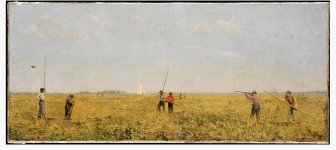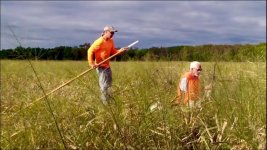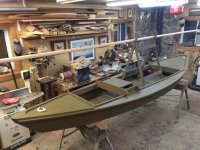Jode,
SOF hulls are skinned with nylon or polyester cloth and painted with oil paint to seal the weave. According to the hype, they are surprisingly durable despite their light weight. The owner of Kudzu Craft has a video on his site where he stabs the bottom of one of his (that is in to be reskinned) with a screwdriver. It takes more effort than you'd expect to punch a hole and you can patch it with duct tape to finish out a day. However, duck season is very tough on a boat and most SOF proponents are recreational paddlers, not hunters, so I have my reservations. If I built this, it would be an experiment to see if a SOF could live up to the hype in the duck marsh and a little bit of art for art's sake
You cannot skin a SOF with FG and realize the light weight or strength of either SOF or even ply/epoxy construction. Coreless FG construction is very thick and heavy. Thin FG requires a core for strength. It punctures and tears surprisingly easily when used as a single, unsupported layer.
I push through a lot of mud, so deadrise is not particularly desirable, but if I built the Shelduck, I would arc the bottom for the reasons you mention. This one would be made as a more brutally utilitarian hull than the SOF DD and aligns most closely with my actual needs if I am honest. The downside is that I would not have to learn as much in order to build it because I have used the materials before.
Nate




